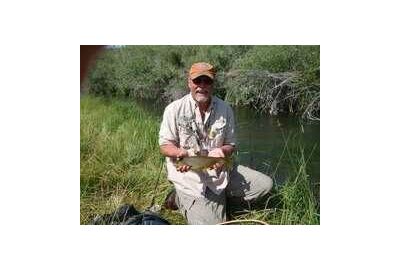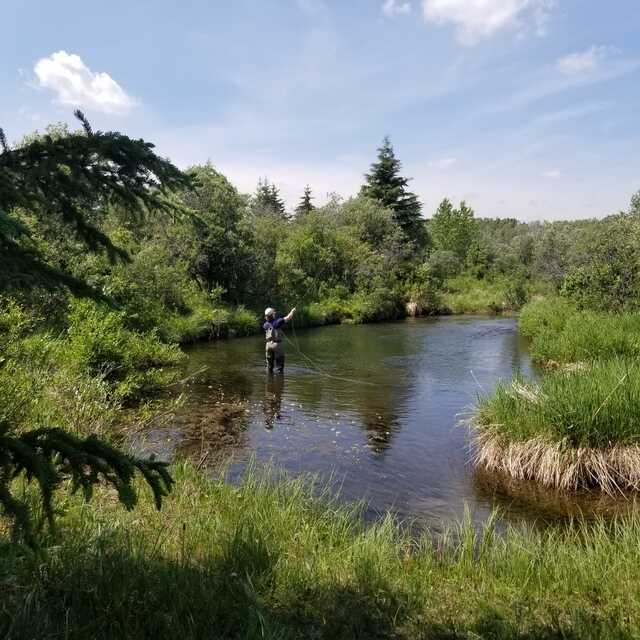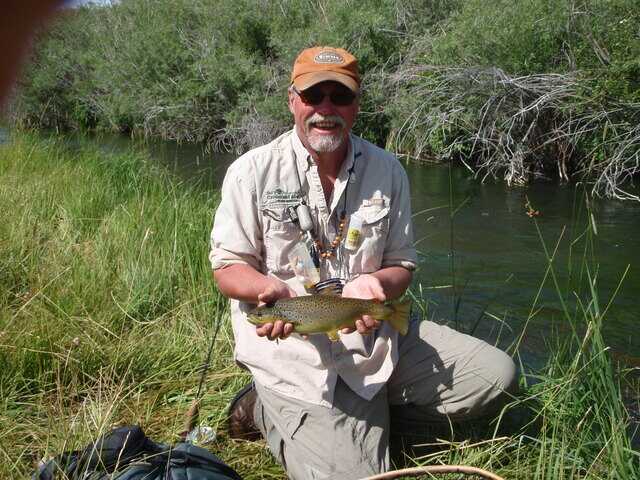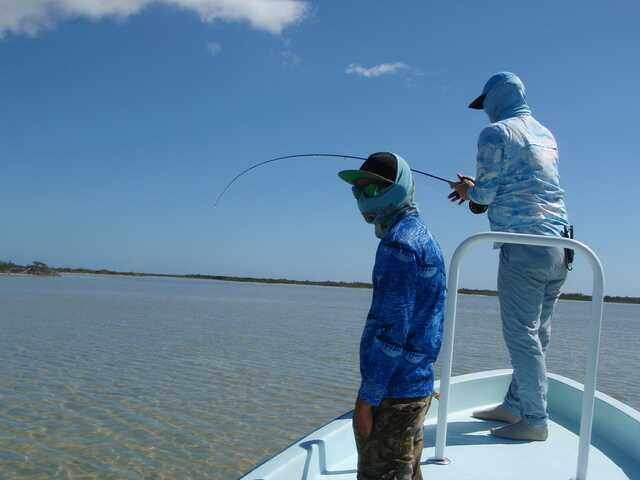While the old song says "there aint no cure for the summer time blues", hopefully I can give you a few tips to help you cure the Summer time fly fishing blues. Summer is on the way and if our Canadian spring this year is any indication it is going to be a hot one. Crowded streams paired with even hotter summer temperatures will pose problems for both the angler and the trout. There are a few things you can do to help both yourself and the fish.
While it might seem obvious avoiding the heat of the day by fishing early and late will go a long way towards both your comfort and success. Some places such as Montana and Alberta have put on "Hoot Owl" regulations in place the last few years, these regulations are enacted when water temperatures become too warm and restrict the hours of fishing to the early hours of the day. It is easier on the fish because as water temperature rise, trout in streams and rivers begin stress due to lack of oxygen. Survival of released trout decreases as the water temperature increases. Also you will generally find insects will be much more active earlier and later in the day. While some insects do hatch midday it is more common to see greater amounts of bugs in the morning and especially the evening. Anyone who has been on a stream that has good populations of caddisflies will attest to that, as soon as the sun is off of the water and the temperature starts to drop caddis are everywhere, including on the water. Spinner s are the stage in a Mayfly lifecycle when the mature insect has a glossy body with clear wings. The females deposit their eggs in generally the same area where they lived as nymphs. Once their eggs have been deposited the females drop to the water and die, at this point their wings fall out to the sides, this is called spent. This time can be important to the summer fly fisher as it often happens at cooler parts of the day, often first thing in the morning. The fish feast on spinners as there is no chance of the insect escaping. One time on Alberta's Crowsnest River I went to the Sulphur Pool early in the morning before a day of guiding. The pool is usually fished from the south bank towards the deeper water on the north bank. This morning there was a spinner fall going on and the fished were lined up in the shallow water of the south bank sipping spinners. I managed to catch a couple of them before spooking the rest, all of this before 8am in the morning.
The angler should learn what bugs are hatching and at what time of day, when the nymphs are most active and when the spinner fall will take place. But as a general rule it's hard to wrong nymphing in the morning and dry fly fishing in the evening.
If there are no prominent insect hatches going on then you can turn your attention to terrestrials such as Grass Hoppers, Ants and Beatle. These tend to be more active during the summer and trout love to feed on them. Windy days are especially productive as these land insects will get blown into the stream where they are helpless.
Sunny days are also challenging for the angler, spooking fish with your shadow, the flash of your rod or flyline can all warn the fish of your presence. Be aware of your shadow, especially in the morning and evening when your shadow is the longest. Keep your false casts to a minimum and as much as possible away from the area you are casting to.
Summer days are made for wet wading and cool clothing. I love to wade wet and do it whenever the conditions allow. While some anglers prefer shorts I like to wear quick dry pants, they are light weight, dry quickly and some even have zip off legs to turn them into shorts. The reason I like the pants is often the areas I fish I am out of the water often and walking through not so bare leg friendly underbrush. I wear my usual wading boots when wet wading with a pair of neoprene wet wading socks on my feet, although there are wet wading shoes and sandals on the market. Other clothing item for summertime angling are the lightweight SPF 50 hoodies that are readily available from many manufacturers. These protect your arms, ears, head, and even your nose if you by the model with the full face protection. Buff are another source of protection from the sun for your head. SPF 50 gloves designed for fishing are also available, initially made for saltwater anglers they are now used by all anglers to protect the back of your hands, which burn easily.
Avoiding highly pressured areas is easier said than done these due to the large increase in anglers on the water in the last few years. You can still avoid some of the pressure by getting away from easy access areas, also, as mentioned above fish early and late and you will not only escape the heat but also quite a few other anglers. Also with the internet removing all secrecy as to where the fishing good maybe avoid these streams and try some of the more marginal waters. Most of the time these more remote waters will be very productive, even if the fish are smaller, plus you should get some solitude.
Fast water, spring creeks, inlet creeks and tail waters will all have either cooler water or more oxygen or both. These can provide better conditions for both you and the trout. The fish will be much more active and willing to bite. Fast broken water oxygenates the water and trout will seek out in these places during high water temperature events. Often fast water is ignored during normal water temperatures as the fish won't be in them in numbers, but when high water temperatures make oxygen scarce you will find these areas hold more fish than usual. Another advantage to broken fast water is that you are less likely to spook the fish as the broken water will help disguise your approach.
As mentioned earlier fighting and landing fish caught in warmer water have less of a chance of survival than those caught in cooler water. Even though they look healthy as they swim away, many will later die. Make sure to land the fish as quickly as possible and handle it with care, remove the hook quickly, keep the fish wet, support the fish facing into the current (not too fast) to let it catch its breath. Forgo pictures and release it once it is ready to go.
Good luck and I hope I've help you avoid the "Summer Time Blues".







